'Small Plates' - frugal portions made hip?
Summer recipes for Skordalia, and Zhug, and Roasted Squash

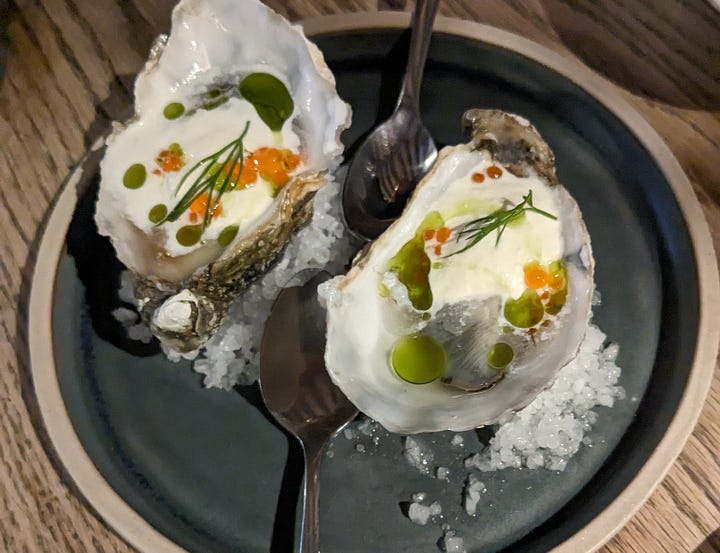
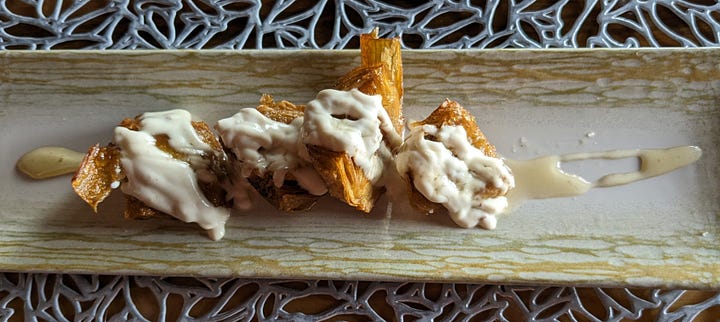
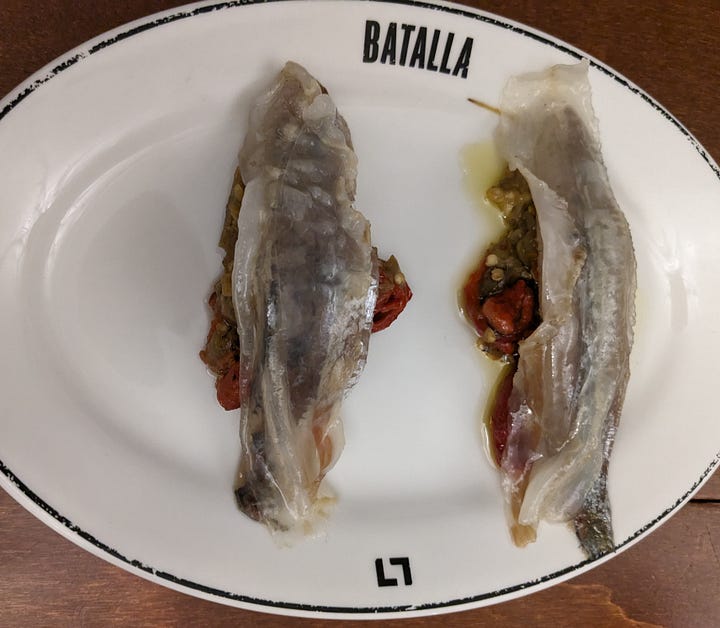
As a person whose childhood summer picnics were generally spent inside a car betting on the raindrops chasing each other down the windows, I am ignoring the ongoing winter chill and heading outside in my raincoat with a ‘Small Plate’ or two, umbrella to hand, in an attempt to pretend it’s spring. It’s the cool way to eat, and current UK temperatures are depressingly cool.
Small Plates are the only dishes on offer in TikTok and Instagram-able restaurants these days - unless you’re going out to eat omakaze, where you’ll be served the same sparse portions, only at four times the price. Both have the virtue for chefs and their bottom line in these desperately challenging economic times, of pricing high portions that are modest in size (and especially modest when shared, ‘Sharing Plates’ being Small Plates’ other descriptive). They allow for more precise provisioning, less waste, and greater profits, albeit profits in the restaurant business are far from great.
Small Plates appeal to the home cook, too. Just four or five bijou dishes of different elements bring joy to the festive table. Who doesn’t love an ice-cream-parlour-like spread where you can have little tastes of lots of things?
Small Plates are basically contemporary mezedes. (Sorry to be pernickerty again, but mezze is one bite only; mezedes is the plural, without which there is no feast).
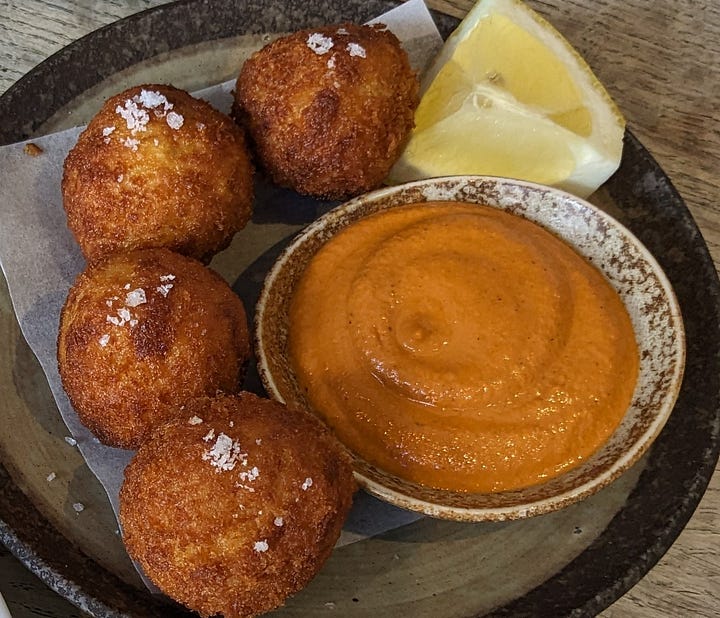
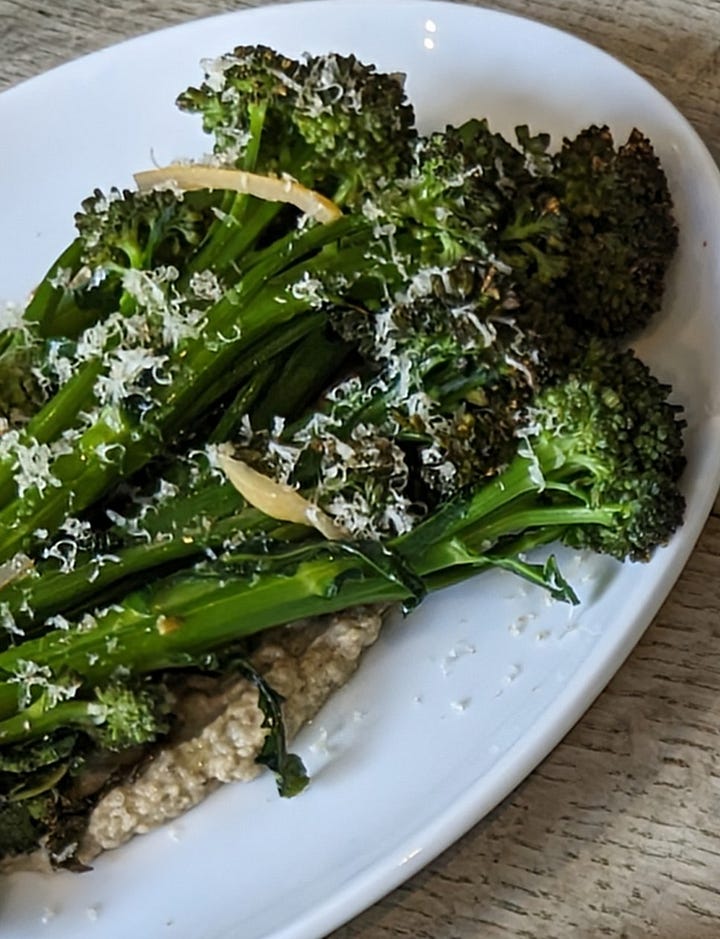
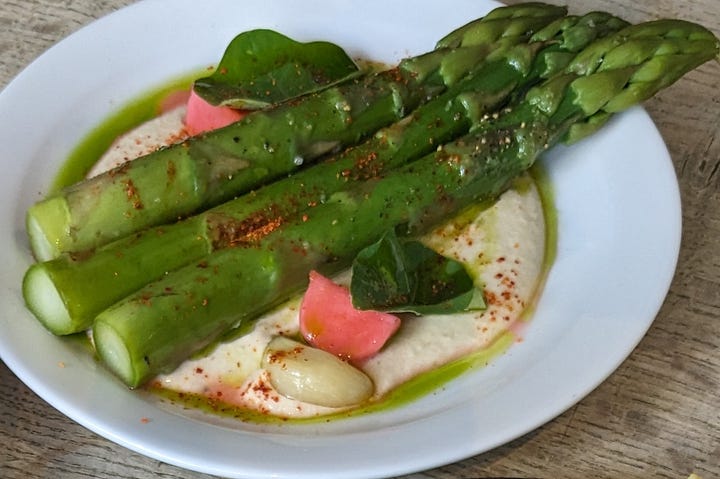
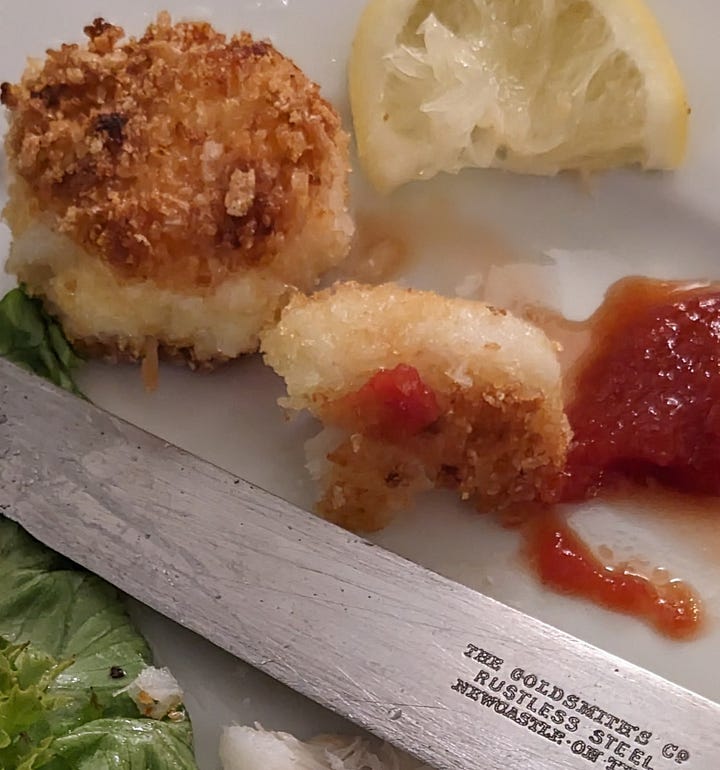
Focus on a range of baby spring vegetables and make two or three dips or sauces to ‘accessorize’ your Small Plates and you don’t even need to cook very many dishes. Simply steam, perhaps, some asparagus, some baby courgettes/zucchini, purple-flowering broccoli/broccolini and lay them over a thick smear of skordalia or other puree. Quickly boil prawns in beer and pile them up alongside a slump of zhug (both recipes below). Not much work lies behind this very festive spread.
But of the vegetable contribution, there are, it seems, certain of them that are less welcome in it. A new study in Food Quality and Preference - not one of your regular bedtime reads? - reveals there are those who don’t much care for faba, fava or, as I know them, broad beans. These are possibly my favourite vegetable. My father grew them. My mother de-podded them, removed their jackets, and cooked them in garlic and cream with grinds of black pepper as a dish all on their own, with hunks of warm baguette to wipe up the sauce.

It’s a shame they aren't more popular. Fava beans are a terrifically healthy food, full of protein and amino acids, with cholesterol-lowering properties. They’ve been taken up enthusiastically by the makers of alt-foods as useful in meat alternatives, chocolate, and flour. This is important because the Journal of Agricultural and Food Chemistry reports some plant-based steaks and cold cuts are lacking in protein - although a British Journal of Nutrition study does give a modest thumbs-up for their protein, dietary fibre and essential minerals content to alt-meat burgers.
As a relatively new industry, little research has been done on the effects of alt-meat on the body, although that is now changing. But since different products will contain different levels of protein, amino acids and salt, isn't it simpler just to get to like fava beans?
It seems it’s their smell that people most turn their noses up at, followed by their perceived bitterness. They deserve greater appreciation and respect. After all, people gladly acquire a taste for Campari and Fernet Branca.
Fava beans have been around since long before the New World provided everyone else with haricot, kidney, butter, and scarlet runner beans. Traces of them have been found, according to archaeologists studying the Bronze Age and earlier, in paleolithic cooking pots. They were even more of a challenge to diners back then, physician and pharmacologist Dioscorides describing them in the 1st century AD as “Windy, flatulent, hard of digestion, causing troublesome dreams.” Dried fava beans are prized by Egyptians who stew them and dress them with oil and garlic, lemon and hard-boiled eggs, to turn into ful medames. Purees from dried fava beans abound in Sicily and Southern Italy, sometimes served draped in cooked bitter greens. In Greece at this time of year, fresh fava beans are gently stewed with the new spring season’s baby artichokes in oil, garlic, dill and and lemon juice.
All beans benefit from garlic. But then, doesn’t most food? although there are those who would disagree. A tremendously glamorous Washington DC society woman invited to dinner informed me as she sat down to eat that she was allergic to garlic. I wished she’d let me know before I had begun to cook. Thinking a garlic allergy sounded improbable, I immediately suspected her of being embroiled in an affair which she was longing to slither back to, abandoning her husband at the dining table to make his own way home.
If you have a reason not to carry the lingering drift of garlic with you, a trick I was given in Greece was to swallow a clove whole before beginning to eat. You’ll need to ask another person if it works. No-one in Greece cared.
Garlic is the key component of skordalia, a thick Greek sauce made in the fashion of mayonnaise but with mashed potatoes instead of egg yolks. It’s a useful accessory for serving with your Small Plates spread of young vegetables, making a change from aioli. When summer arrives, it goes well with roasted or barbecued meat and fish, fried aubergine/eggplant slices or boiled baby courgettes, as well as fish that has been fried or steamed - an alternative to tzadziki, that popular yogurt-and-garlic dip which sometimes includes grated cucumber and chopped mint. And skordalia is particularly good with the recipe that follows this.
6-8 cloves garlic, peeled and finely chopped
5 medium potatoes, boiled till soft then skinned
425ml/¾ pint - 570ml/1 pint olive oil
1 tablespoon lemon juice
salt to taste
Press the garlic with the potatoes through a potato ricer or mouli legumes or sieve. Slowly dribble in the olive oil as though making mayonnaise, then the lemon juice, and season to taste. Then slowly stir in a small coffee cup of water to thin the sauce to Greek yogurt consistency.
Kate Walker, writer of Around the World in 80 Scrapes - where travel gets political which covers travel and food and related politics mostly in South East Asia and Central America, and a remarkable number of cocktail bars, introduced me to using the sauce as a base for thick slices of roasted Delicata or other squash.
Marinate the deseeded but not peeled squash slices in equal glugs of oil and maple syrup to coat, salt them, toss them well, then spread in a baking pan and roast until the slices begin to caramelise, about 35-40 minutes, at 180C/350F. Smear the Skordalia thickly over a serving dish, pile on the squash, sprinkle with crisply fried slices of onion if you wish, then dab with teaspoonfuls of zhug, the Yemeni spicy green salsa, which you then pass round in a bowl.
It’s worth making a batch of zhug as it, too, is terrific with roasted or grilled meats, chicken, fish, and shrimp. Store in a glass jar and cut a disc of parchment paper to press over the top of the sauce and keep in the fridge. It should last a couple of weeks.
2 cardamom pods
1 teaspoon black peppercorns
1 teaspoon coriander seeds
½ teaspoon cumin seeds
2-4 chillies of any sort, depending on your heat tolerance, finely chopped
2 garlic cloves, peeled and finely chopped
salt to taste
25g/1 cup very finely chopped parsley
20g/¾ cup very finely chopped fresh coriander/cilantro
160ml/⅔ cup extra-virgin olive oil
4 teaspoons fresh lemon juice
Scrape the cardamom seeds from their pods into a dry frying pan and toast over medium heat with the peppercorns, coriander seeds, and cumin seeds, regularly shaking the pan until a scent arises, 2-3 minutes. Pour into a grinder or mortar and cool, then finely blitz and transfer to a small mixing bowl.
Blitz the chopped chillies and garlic with a pinch of salt, or smash in the pestle with a mortar, then add the oil and grind into a paste. Add to the bowl of spices and mix together well then stir in the lemon juice. Store in a lidded glass jar in the fridge for up to 2 weeks.




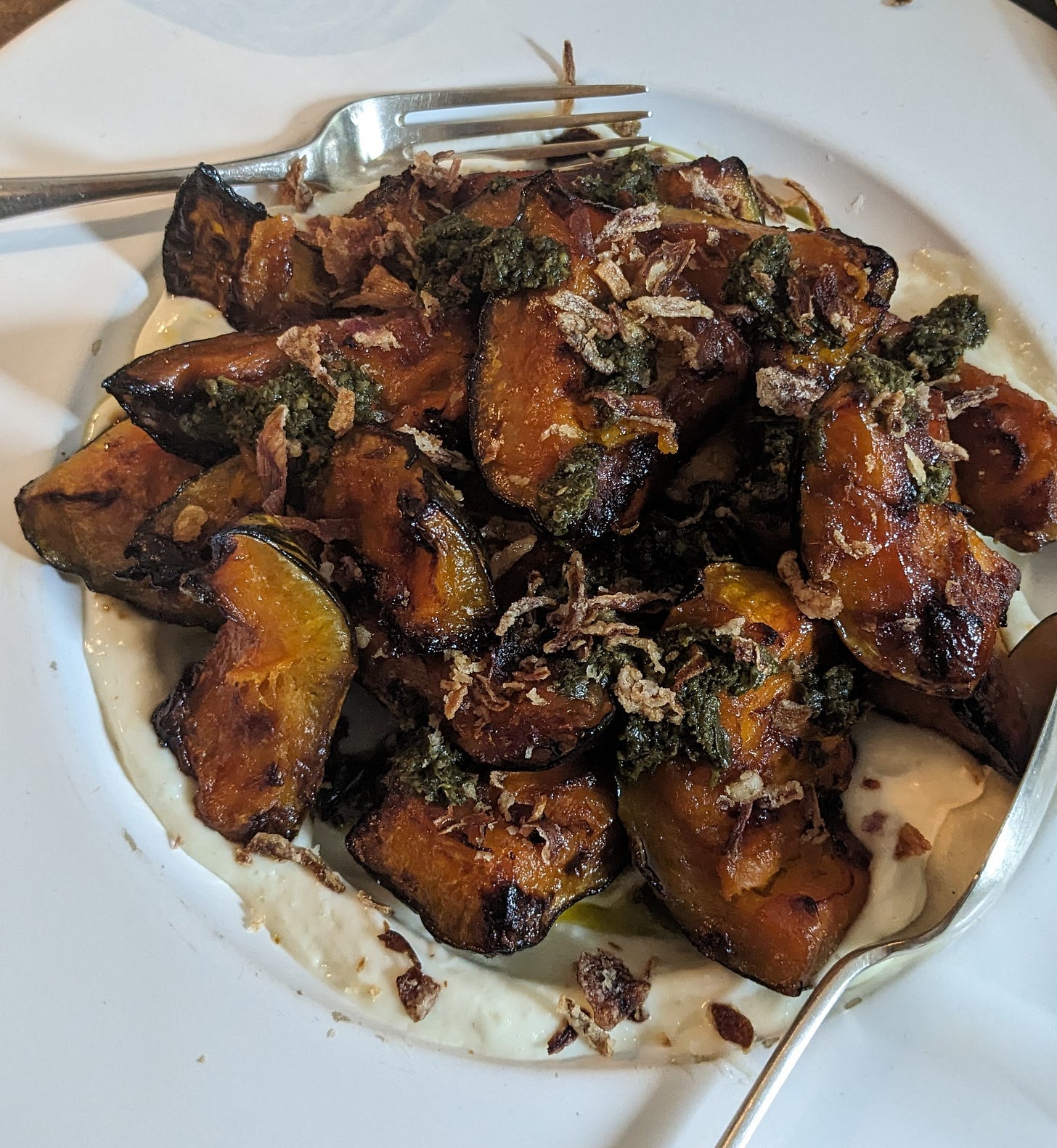
I for one adore broad beans and am excited for them to be back as I've had a broad bean and pecorino risotto forming in my mind ever since I discovered a source of incredible pecorino as it's a combination I love. Also I had a homemade fava bean tofu at The Blue Pelican in Deal the other week (and again on a return trip on Thursday) which just blew my mind with delicate flavour (https://www.instagram.com/p/C6OG4vnohFa/?img_index=5).
And in the captions, I LOVE The Union in Rye, though if you want the same excellence but not in small plate format they also have a pub - The Plough - just outside the town which I both adore and frequent often!
Thank you for another entertaining & informative food article.
I should not read your articles when I am hungry! I am anxiously awaiting the opening of the farmers’ market next weekend after which we fly to France where the outdoor markets should be overflowing with spring vegetables. I will make the 2 sauce recipes you provided while we are there. My SIL will love them.